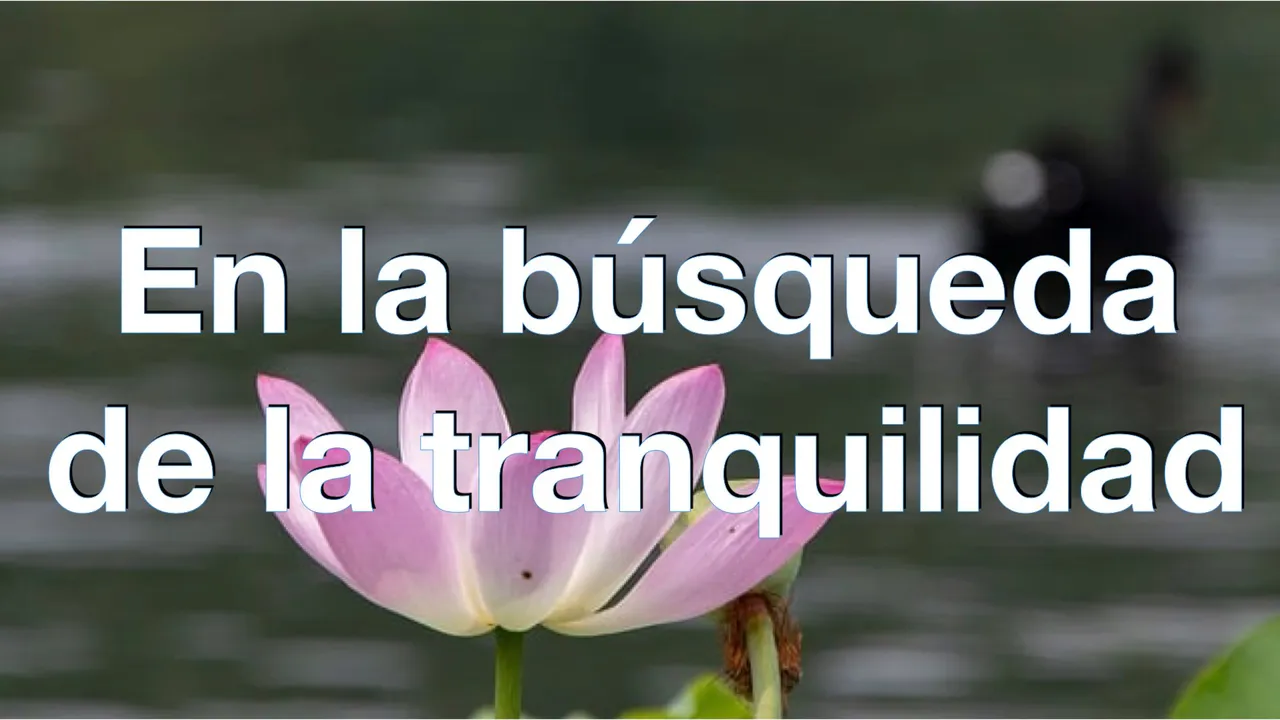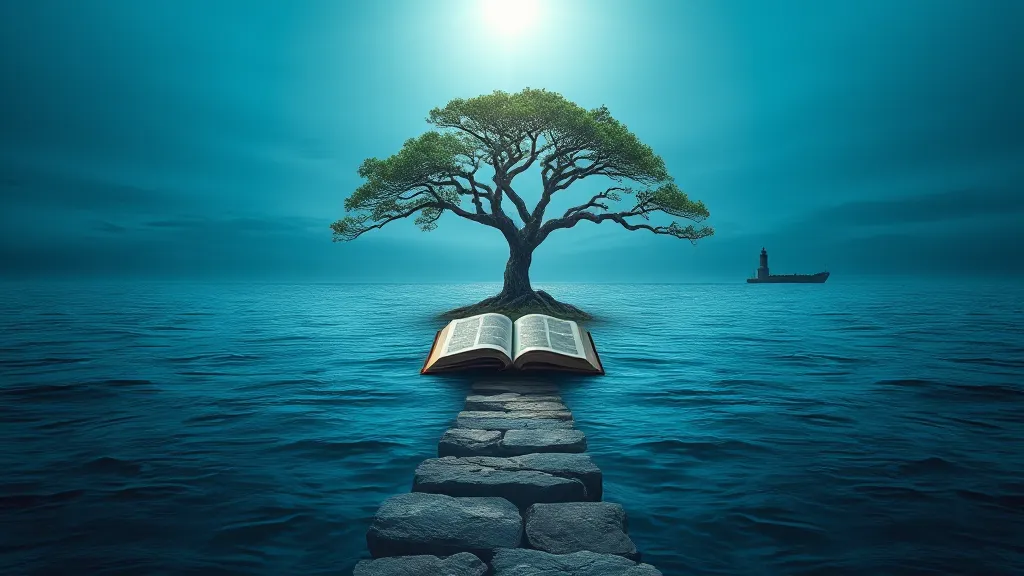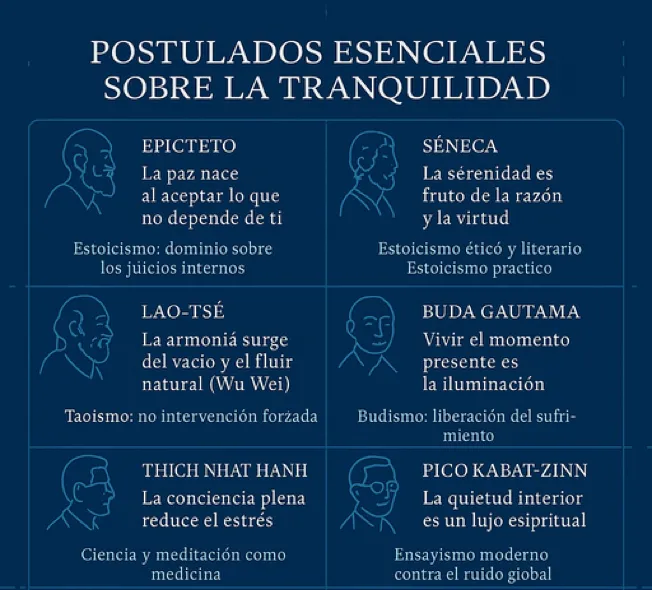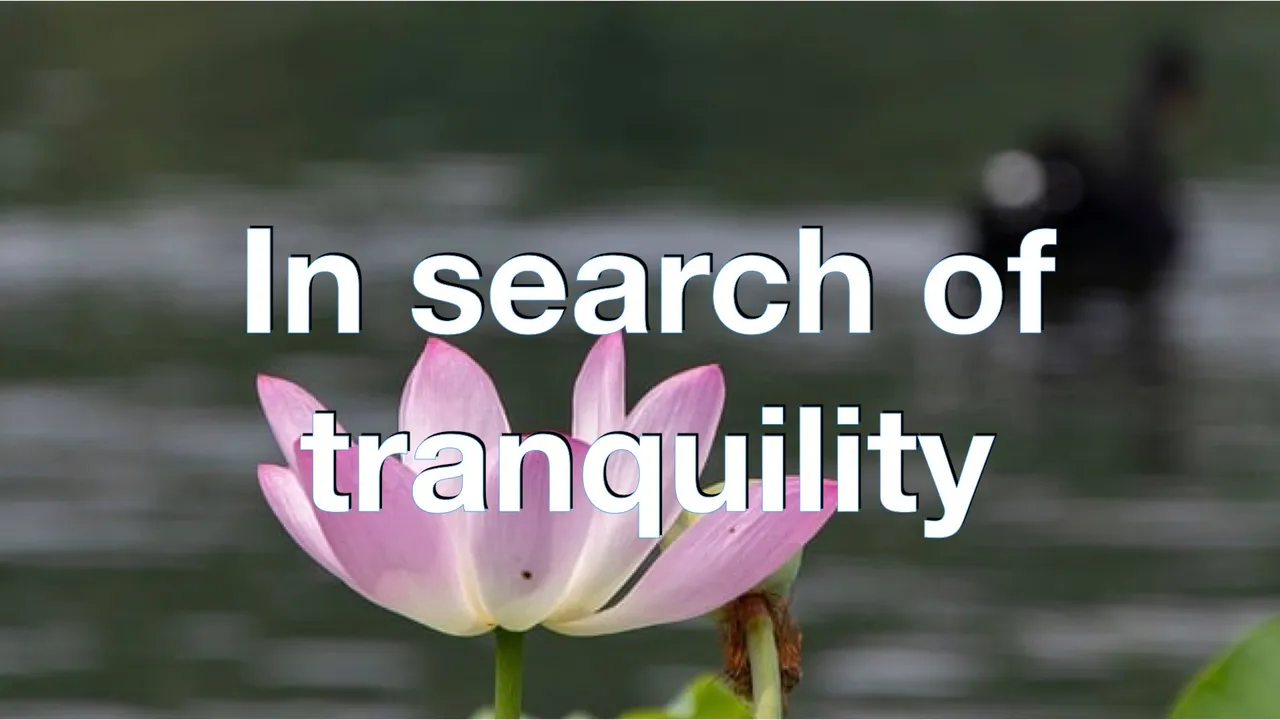

Creo que con la madurez uno concientiza la necesidad de hallar tranquilidad en la vida. Claro, asimismo, y casi en paralelo para quienes despiertan o reaccionan a la espiritualidad, también se cae en cuenta de la existencia de un propósito humano vedado, y que reafirma el valor de estar aquí y ahora. Aunque siendo pragmático, uno es… más allá de cualquier consideración racional. Por otro lado, y en virtud de lo leído y vivido, si bien, dando por sentado de que en el universo conocido impera el cambio y los ciclos en un constante fluir, esta realidad impone retos en la medida de la amplitud de consciencia de los individuos.
Quizás, mi querido contertulio de #HolosLotus, estás leyéndome en este instante, grabado en lo digital, porque andas en el camino de encontrar iluminación u orientación ante las inquietudes que desde siempre han mortificado a antiguos pensadores y filósofos de oficio.
¿No sé por dónde empezar? Sí, por enumerar los asuntos que afligen la existencia moderna, y que, a mi parecer, han sido constantes en las eras. Incluso, antes de la historia. Por ejemplo, esta mañana, leí sobre el hallazgo arqueológico de herramientas de madera, cuya datación arrojó trescientos mil años. Es decir, obras de una sociedad agrícola sofisticada en plena edad de piedra. Humanos que ya lidiaban con la incertidumbre y planificaban para garantizar el sustento y cierta tranquilidad.
De seguro, aquellos hombres prehistóricos, al igual que nosotros hoy, buscaban, además de la subsistencia, el propósito de su existencia como la tranquilidad en el proceso. ¿Qué cómo lo sé? Por los túmulos de enterramiento de los muertos, alrededor de los vestigios de los asentamientos. Un claro indicio de respeto y cariño, propios de la consciencia humana. De hecho, pienso, en que la humanidad se ha reiniciado más de una vez, historia enterrada en las arenas del tiempo, quedando solo susurros en la mente colectiva que tamizan leyendas y mitos que ponen a prueba al canon. Basta con considerar la antigüedad de los reyes sumerios relatados en las tablas de arcillas cocidas encontradas en la biblioteca de Asurbanipal en la Nínive Asiria.
Así que, ¿sabes cuál es tu propósito aquí en la tierra? ¿Disfrutas de una vida sosegada o atribulada?
Aunque hay muchas publicaciones en la comunidad que aportan ideas, conceptos y recomendaciones al respecto. Yo todavía, en lo interno, ando en la búsqueda de esas respuestas.
Intuyo, que, el propósito en sí, es la vida misma; y el meollo del asunto, sea el comprenderla (al menos en forma intuitiva) y vivirla con plenitud bajo la égida de lo bueno y lo correcto. ¡Vaya! ¡Qué difícil resulta abstraerse de la herencia cultural! No en balde somos productos de la sociedad que nos vio nacer, y que avanza, muy a pesar nuestro, y del pesimismo obstructivo a la expansión de la consciencia colectiva del hombre.
En cualquier caso, creo que aspirar a la plenitud, amerita, tranquilidad en la misma vorágine, y en tal sentido, quisiera compartirles algunas consideraciones y recomendaciones sobre la paz, la quietud, el sosiego de ánimo, la imperturbabilidad dadas, por algunos célebres ancestros pensadores, como también de otros contemporáneos.

Imagen generada por IA de Flux-webui (Pinokio) de manera local bajo el modelo de black-forest-labs/FLUX.1-schnell
De Epicteto (filósofo estoico nacido en el año 50 d.C. en Hierápolis, ciudad de Roma), quien enseñó, en la tradición de Sócrates, que dominarse a sí mismo, implica la libertad verdadera. Por lo siguiente, primero hay que distinguir entre lo que está bajo nuestro control, y lo que no lo está. Parte de sus enseñanzas fueron recogidas por uno de sus discípulos en el Enquiridión o Manual de la estoa (Vivir). Sí, cuántas veces habremos oído en boca de los divulgadores de la autoayuda, que no tiene sentido preocuparse por aquello que está a fuera de nuestro alcance. Incluso, existe una oración bajo esta premisa, atribuida erróneamente a Santa Clara de Asís, pero que en realidad pertenece al teólogo norteamericano Reinhold Niebuhr: La oración de la serenidad.
Señor, concédeme serenidad para aceptar todo aquello que no puedo cambiar, valor para cambiar lo que soy capaz de cambiar, y sabiduría para entender la diferencia.
Año: 1940
De Séneca (también filósofo romano y consejero principal del nefasto emperador Nerón, quien, por cierto, lo mandase a ejecutar por una supuesta conspiración en su contra) podemos aprender de la última sección (De la tranquilidad del ánimo) del segundo libro de su obra “De la Clemencia”; que vivir ceñido a la virtud moral y ética y a la razón proporciona una paz interior. No obstante, el estoico romano imperial, a diferencia de Sócrates, quien fuese coherente y consistente en su actuar con el ejemplo afrontó la muerte con serenidad, sí mostró fisuras en su conducta no tan pulcra regido por su lucha permanente con el amor a lo material, y al poder.
El lector perspicaz, entre líneas, hallará, en Séneca, una reflexión sincera ante Sereno (el destinatario de los comentarios). Así que, el juicio sobre este, no debiera ser tan severo. ¿Quién no ha entrado en contradicciones? Errar es de humano, y pocos rectifican como los dioses. Empero, no todos somos como Sócrates. Aunque si tenemos a la mano su ejemplo, y de seguro, Séneca, como cualquiera de nosotros, intentó tener serenidad enfrente del infortunio.
Pensándolo mejor, su desgracia fue aparente ante la convicción de la libertad interior y espiritual; esa, que permite dormir profundo en medio de la tempestad. Y creo que al final venció los miedos más profundos e instintivos. El predominio del espíritu indomable sobre lo material. El suicidio obligado requirió hasta tres intento, la última prueba de la determinación socrática: fracasó en el corte de las venas, mostró inmunidad al beber cicuta, y la estocada final y triunfo, la asfixia consumada en el sauna.
¡Vaya qué me he extendido más de lo esperado! Esos son los riesgos de divagar con libertad de riendas. Y no quiero aburrirles, ni cansarles. Así que, dejemos hasta aquí la tertulia entre mis palabras y sus pensamientos. Todavía me quedan ideas en el tintero virtual, en relación con otros interesantes pensadores, tales como Marco Aurelio, Lao-Tsé, Siddhartha Gautama, Thich Nhat Hanh, Picot Kabat-Zinn, solo por nombrar a algunos exponentes magníficos que buscaron la verdad y la tranquilidad. Mientras tanto, si gustas, te invito a reflexionar sobre las sentencias que te dejó en el cuadro resumen. Podrías profundizar en sus libros y enseñanzas. Por lo pronto, con la venia de Dios, volvamos sobre estos pasos y ampliemos la búsqueda de la tranquilidad asido de sus ideas en un próximo encuentro.

Cuadro generado por IA con asistencia de Microsoft Copilot según mis instrucciones

Un breve ensayo original de @janaveda
La miniatura esta diseñada con base en la imagen de Zhu Bing en Pixabay
¡Cansado! ¿Ya no te satisfacen las redes sociales tradicionales?
Entonces, te invito a conocer Hive presionando aquí.
Únete a nuestra comunidad global, en donde la libertad sin censura en nuestro norte.



I believe that with maturity, one becomes aware of the need to find tranquility in life. Of course, also, and almost in parallel for those who awaken or react to spirituality, one also becomes aware of the existence of a forbidden human purpose, and that reaffirms the value of being here and now. Although being pragmatic, one is... beyond any rational consideration. On the other hand, based on what I have read and experienced, although I take for granted that change and cycles reign in a constant flow throughout the known universe, this reality poses challenges that extend to the breadth of individual consciousness.
Perhaps, my dear #HolosLotus fellow, you are reading me right now, digitally recorded, because you are on the way to find enlightenment or guidance to the concerns that have always mortified ancient thinkers and philosophers.
I don't know where to start. Yes, to enumerate the issues that afflict modern existence, and which, in my opinion, have been constant throughout the ages. Even before history. For example, this morning, I read about the archaeological find of wooden tools, the dating of which yielded three hundred thousand years. That is, works of a sophisticated agricultural society in the middle of the Stone Age. Humans who were already dealing with uncertainty and planning to ensure their livelihood and a certain peace of mind.
Surely, those prehistoric men, like us today, sought, in addition to subsistence, the purpose of their existence as tranquility in the process. How do I know? By the burial mounds of the dead, around the vestiges of the settlements. A clear indication of respect and affection, typical of human consciousness. I think humanity has restarted more than once, history buried in the sands of time, leaving only whispers in the collective mind that sift legends and myths that test the canon. Just consider the antiquity of the Sumerian kings recounted on the baked clay tablets found in the library of Ashurbanipal in Nineveh, Assyria.
So, do you know what your purpose is here on earth? Do you enjoy a quiet or troubled life?
Although many publications in the community provide ideas, concepts, and recommendations in this regard. I am still, internally, searching for those answers.
I guess that the purpose itself is life itself, and the heart of the matter is to understand it (at least intuitively) and live it fully under the aegis of what is good and right. Wow, how difficult it is to abstract from the cultural heritage! It is not in vain that we are products of the society in which we were born, and which advances, much to our regret, and of the pessimism that obstructs the expansion of man's collective consciousness.
In any case, I believe that aspiring to fulfillment deserves tranquility in the same maelstrom. In this sense, I would like to share with you some considerations and recommendations on peace, quietude, calmness of mind, imperturbability given by some famous thinker ancestors, as well as by other contemporaries.

AI-generated image of Flux-webui (Pinokio) locally under the black-forest-labs/FLUX.1-schnell model
From Epictetus (Stoic philosopher born in 50 A.D. in Hierapolis, city of Rome), who taught, in the tradition of Socrates, that self-mastery implies true freedom. To proceed, we must first distinguish between what is within our control and what is not. Part of his teachings were collected by one of his disciples in the Enquiridion or Manual of the Stoa (Living). Yes, how many times have we heard from the mouths of the disseminators of self-help that it makes no sense to worry about what is beyond our reach? There is even a prayer under this premise, erroneously attributed to St. Clare of Assisi, but which belongs to the North American theologian Reinhold Niebuhr: The prayer of serenity.
Lord, grant me serenity to accept all that I cannot change, courage to change what I can change, and wisdom to understand the difference.
Year: 1940
From Seneca (also a Roman philosopher and chief advisor to the nefarious emperor Nero, who, by the way, had him executed for an alleged conspiracy against him) we can learn from the last section (On tranquility of mind) of the second book of his work “On Clemency”, that living by moral and ethical virtue and reason provides inner peace. However, the imperial Roman Stoic, unlike Socrates, who was coherent and consistent in his actions by example and faced death with serenity, did show fissures in his not-so-neat conduct, governed by his permanent struggle with the love of material things and power.
The perceptive reader, between the lines, will find, in Seneca, a sincere reflection before Serenus (the addressee of the comments). So, the judgment on this one should not be so severe. Who has not entered into contradictions? To err is human, and few rectify like the gods. However, not all of us are like Socrates. Although we do have his example at hand, and surely, Seneca, like any of us, tried to have serenity in the face of misfortune.
On second thought, his misfortune was apparent in the face of the conviction of inner and spiritual freedom, that which allows one to sleep soundly amid the storm. And I believe that in the end, he overcame the deepest and most instinctive fears. The predominance of the indomitable spirit over the material. The forced suicide required up to three attempts, the last test of Socratic determination: he failed in the cutting of the veins, showed immunity to drink hemlock, and the final blow and triumph, the asphyxiation consummated in the sauna.
Boy, have I rambled on longer than expected! Those are the risks of rambling with free rein. And I don't want to bore you, nor tire you. So, let's leave the conversation between my words and your thoughts until here. I still have ideas in the virtual inkwell, regarding other interesting thinkers, such as Marcus Aurelius, Lao-Tse, Siddhartha Gautama, Thich Nhat Hanh, and Picot Kabat-Zinn, just to name a few magnificent exponents who sought truth and tranquility. In the meantime, if you like, I invite you to reflect on the sentences he left you in the summary box. You could go deeper into his books and teachings. In the meantime, with God's permission, let us retrace these steps and expand the search for tranquility based on his ideas in a future meeting.

Chart generated by AI with the assistance of Microsoft Copilot according to my instructions.

A brief essay by @janaveda in Spanish and translated to English with www.deepl.com (free version)
The thumbnail is designed based on the image by Zhu Bing on Pixabay
Tired...! Are you no longer satisfied with traditional social networks?
Then I invite you to get to know Hive by clicking here.
Join our global community, where uncensored freedom is our north.
